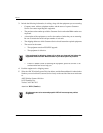
Glossary
612 Avidia System Configuration and Management User Manual
Cell A fixed-length packet. Also, the unit of data transmission used in ATM.
Each ATM cell contains a fixed-size frame (53 bytes) consisting of a
five-byte header and a 48-byte payload.
Channel A physical (cable) or virtual path that carries data between two devices.
Circuit A communications link between two devices.
CLP (Cell Loss Priority) Designates whether an ATM cell can be discarded by the network when
there is traffic congestion. This parameter is stored in the ATM cell
header.
Community String A text string required for an SNMP trap to be received by a trap
receiver(s). Also, a text string that identifies an SNMP community and is
associated with specific access rights (read-only or read/write).
CRC (Cyclic Redundancy
Check)
A method used to verify the integrity of data transmission.
DLCI (Data Link
Connection Identifier)
The logical channel a data frame travels from the transmitting device to
the destination device. The valid range is 16 to 991.
Encapsulation The inclusion of data in a protocol header prior to transmission, which
enables successful data transmission between different protocol
networks.
ES (Errored Second) A one-second interval during which errors prevent payload from being
corrected.
Ethernet A protocol used for LAN traffic, which has a transfer rate of up to 100
Mbps, depending on the media and rating of the interface.
Flash memory Non-volatile memory that can be erased and reprogrammed.
Frame relay A protocol that divides data into variable-sized frames or packets for
transmission over an ATM network to an ATM or frame relay device.
FRF.5 A Frame relay standard that defines how frames are encapsulated so that
they can be carried by the ATM network to another frame device.
FRF.8 A Frame relay standard that defines how frames are translated between
ATM and frame devices.
Gateway A device (generally a router) that provides translation services to allow
communication between two dissimilar networks.
HDSL (High-bit-rate-
Digital Subscriber Line)
A technology used to transmit data on unconditioned copper telephone
wire at rates up to 768 kbps in both upstream and downstream directions,
without repeaters.
IDSL (ISDN DSL) A technology in which digital data is transferred at rates up to 144 kbps
over existing ISDN lines.
IISP (Interim Inter-switch
Signaling Protocol)
Supports static routing of signaling messages between clustered AVIDIA
systems. This protocol enables line card redundancy, which automatically
reroutes traffic to another static route when a line card fails.
Interworking Allows frames to be transported by an ATM network to an ATM device or
another frame relay device.
IP (Internet Protocol) A TCP/IP protocol that controls packet transmission.


















